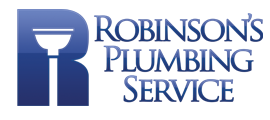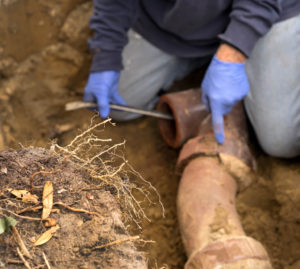Wastewater backing up into your basement, crawl spaces or yard is a clear sign that you need sewer line repair. This problem also requires prompt attention to eliminate the smell and health hazard posed by raw sewage as quickly as possible.
A single overflowing toilet can often be fixed by a homeowner through mechanical means such as plunging or chemical methods like drain cleaners. However, a professional plumber is needed to perform main sewer line repair when multiple appliances are backing up simultaneously.
Determining how much it costs to repair a sewer line varies greatly, and depends on several factors including:
- Complexity of the repair
- Specific procedure
- Geographic location
The diagnosis phase usually incurs a separate charge since plumbers must first identify the location and nature of the problem with the sewer line.
Furthermore, the cost of restoring your home and yard to its original condition after the plumbers have finished their work also contributes to the total sewer line repair cost.
Causes for Sewer Line Repair
Sewer lines gradually become damaged over a long period of time. It’s only when sewage backs up that you’ll become aware of the problem.
Damage to the sewer lines can generally be classified into the following:
- Bends
- Obstructions
- Breaks
Sewer Line Bends
A bend in a sewer pipe allows water to flow down easily but makes it difficult for water to flow back up.
This situation typically occurs when soil under the pipe settles, allowing a section of pipe to sink lower than the rest of the pipe. This section is known as a “belly” of the sewer line.
Sewer Line Clogs
Clogs are the most common type of obstruction in a sewer pipe, although they can usually be removed without performing an actual repair.
However, roots can also obstruct a pipe in their search for water. Some roots can be removed with a cable machine, but severe cases will require the pipes to be dug up and cleared manually.
Sewer Line Breaks
Breaks are most likely to occur at the seals that join two sections of sewer pipe together, causing a leak when the seal is compromised. The process of water repeatedly freezing and melting can also cause sewer pipes to split or crack.
Additional causes of breaks in a sewer pipe include rust or some other type of corrosion.
Diagnosing Sewer Line Repair Problems
The most common sign the main sewer line is in need of repair is bubbling or a gurgling noise from a toilet at random, which could mean that air is escaping from a partially blocked line.
A rotten smell near the kitchen drain may signify food waste from the garbage disposal is blocking that drain.
A plumber can fix these problems with tools such as a powered drain snake or auger. The cost of this procedure is in the form of a flat fee, ranging from $169 to $460 depending on the geographic location and individual plumber.
More serious problems necessitate inspection with a camera and radio transmitter mounted on the end of a cable. The camera records images from the inside of the pipes, while the radio transmitter provides the camera’s location for each image.
A plumber then uses this information to develop a repair procedure that will usually be less costly than simply digging up pipes in the backyard to locate the problem. Most plumbers charge an hourly rate for video inspection that can range from $45 to $150 per hour. The inspection costs are in addition to the actual repair costs.
Sewer Line Repair Costs
You’ll need a licensed and insured sewer repair contractor to provide the options for sewer line repair. The amount of pipe that needs to be repaired and the method used are primary factors that go into how much it costs to repair a sewer line.
Plumbers provide estimates as a flat fee based on the total length of pipe that must be repaired. These options can be classified into traditional and trenchless repairs.
Traditional Sewer Line Repair
The traditional procedure for repairing a sewer line involves digging up a portion of the line, either manually or with equipment such as an excavator. This procedure is tedious since the contractor must exercise great care to avoid damaging the sewer pipes or other underground utility lines.
Once the repairs are complete, workers must then fill the trenches with dirt to cover up the pipes, which results in a considerable mess. Traditional repairs are less common today, but they’re still used when the configuration of the pipes makes trenchless repair impractical.
The cost of excavating sewer pipes can range from $150 to $450 per foot, which includes the cost of digging up the line, repairing and replacing it.
For example, a typical sewer line repair requiring about ten feet of pipe would result in a total cost between $1,500 and $4,500. Plumbers try to perform a partial replacement when the system is in generally good condition and only has damage in a specific area.
A total replacement of the sewer pipes may be necessary if the whole system is in poor condition or made of outdated materials. This procedure can cost $8,000 to $30,000, depending on the total length and depth of the system.
Trenchless Sewer Line Repair
Trenchless repairs consist of making small vertical holes in the ground rather than a long horizontal trench and include several specific techniques.
The primary advantage of these methods is that they avoid the mess and expense of digging up entire lengths of pipe, replacing them and covering up the new pipes. However, they also require a video inspection to identify the specific area of the clogged or broken pipe.
The availability of technology and the reduced cost has greatly increased the use of trenchless repairs in recent years. The cost of trenchless sewer line repair is based solely on the type of repair and length of pipe that needs to be repaired since it doesn’t require digging or cleanup.
CIPP Cost
Cured-in-place piping (CIPP) is the preferred trenchless repair option if the structural integrity of the pipe is sound.
Once the video inspection has located the problem, the plumber cuts a small access hole in the pipe. The plumber pushes a flexible tube coated with epoxy resin into the hole and inflates it, lining the pipe with resin. Once the resin hardens, the access hole can be covered and sealed.
The cost of CIPP is typically in the range of $75 to $250 per foot.
Pipe Bursting Cost
Pipe bursting is a trenchless repair method that’s often used when the pipe’s structural integrity has been compromised in some way. This technique requires the plumber to cut an access hole on each end of the damaged section.
The plumber inserts a cable with a bursting head into an access hole and pulls it through the pipe from the other end, which fractures the pipe and pushes the fragments out of the way. A flexible polyethylene pipe is attached to the cable behind the bursting end, which the plumber pulls into position. The plumber then covers and seals the access holes.
Pipe bursting typically costs $85 to $300 per foot.
Estimating Sewer Line Repair Costs
Sewer line repair is always the preferred method but sometimes a sewer line replacement is necessary, with costs varying drastically based on the nature of your plumbing problem.
If you’re not sure what’s going on with your sewer line and what repairs are needed, contacting a professional plumber is a great first step A professional plumber can help you understand your options and what your specific costs will be.
Ready to get your sewer line repair underway?
Here at Robinson’s Plumbing Service, we have trained plumbers ready to perform whatever services are needed to get your sewer line back to 100%. You can call us at 804-794-0918 to make an appointment or click the button below to learn more about our sewer line repair services.
Sewer Line Repair Services


